Portland: Green and Clean
Columbia River Basin
|
NEW ESRI StoryMaps: What's On Our Shelves & NWNL Song Library & No Water No Life ESRI |
Columbia River Basin
Polly Birge
Outreach Coordinator for Commissioner Sam Adams
Bureau of Environmental Services & Office of Sustainable Development
Alexa Pengelly
Public Awareness Coordinator for Commissioner
Environmental singer-songwriter
Alison M. Jones
NWNL Director and Photographer
All images © Alison M. Jones, unless otherwise noted. All rights reserved.
NWNL Polly and Alexa, thank you both for your time. Given that Portland is bounded by the Willamette River and the Columbia River just before their confluence, what is Portland’s government role in promoting a healthier watershed?
POLLY BIRGE I work in the city’s Office of Sustainable Development. Much of their work is implemented by the Bureau of Environment Services or the Bureau of Transportation. Commissioner Adams’ portfolio includes water and sewers, transportation and arts & culture. As his Outreach Coordinator, I’m focused on education, arts and sustainability. We’re proud of our watershed management; our public transportation system with its MAX light rail; and Portland being biggest “Bicycle City” in the US.
The watershed and environmental issues Portland Commissioners deal are complex, science-based, and have social and cultural attachments. The Office of Sustainable Development and Bureau of Environmental Sciences Commissioners are constantly educating and involving our constituents in our efforts to replicate the natural setting that was here before our human imprint.
ALEXA PENGELLY I think Portland is the only city in the nation to have this commissioner-style government.
POLLY BIRGE Yes. Many other cities govern in a top-down style; whereas, here it’s very egalitarian and spread out. The Office of Sustainable Development provides many alternatives. After Al Gore’s Inconvenient Truth came out, people here said, “Climate Change isn’t about being progressive or conservative: it’s about science and sustainable, empirical data.” Portland residents asked themselves, “Hey, what are we doing messing up our environment on a daily basis?”
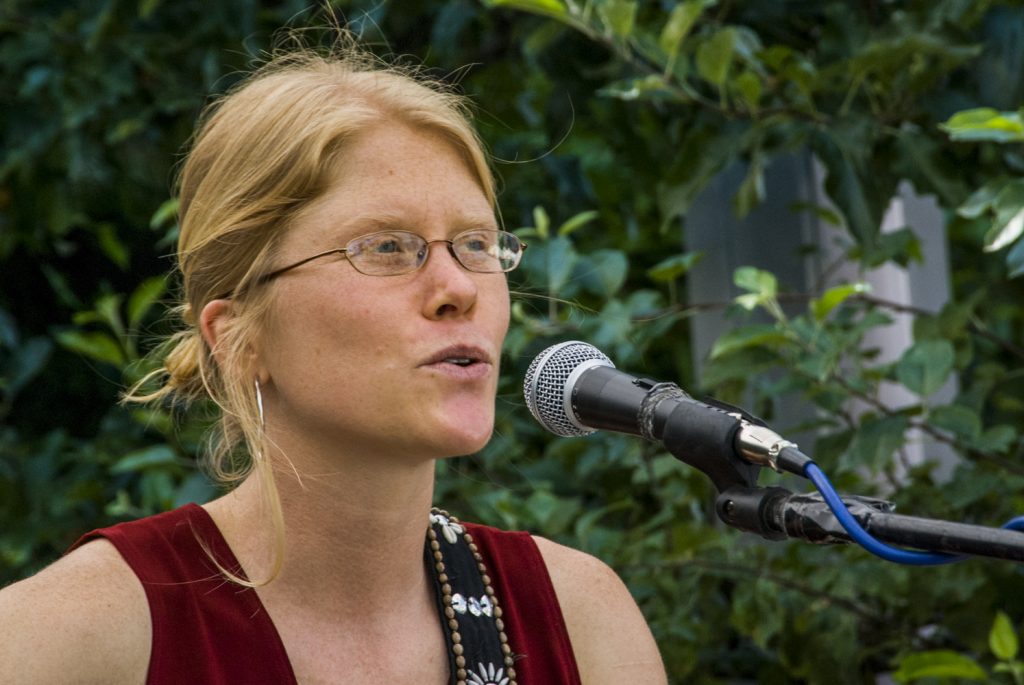
ALEXA PENGELLY So, in order to clean up the Willamette River, which flows into the main stem of the Columbia River, Portland is pursuing new forms of storm-water management to replace its Combined Sewer Overflows [CSO’s] that collect rainwater runoff, domestic sewage, and industrial wastewater in the same pipe. It will make a huge difference in water quality.
POLLY BIRGE The main project of the Bureau of Environment Services [BES] is building a big pipe project which I think started five years ago and will be complete in 2011. That will enlarge the capacity of our current pipes to carry all city stormwater to various management plants to be cleaned. Right now, our pipes are so small that they overflow during storms. Raw sewerage then goes directly into the Willamette River.
Sewage in the rivers is a big challenge because it not only messes up the ecosystem, but it also poses an environmental hazard, creating health problems if people get in the water to play around. Portland engineers and decision-makers are focusing much of their time and energy now on our big pipe projects. And we also have significant educational and satellite projects involving smaller infrastructure solutions.
NWNL Do you have any other ways to improve urban runoff issues?
POLLY BIRGE One way to clean about 30% of the Willamette River would be to raise our underground water table. Thus, we are encouraging installation of bioswales and eco-roofs (green roofs) to allow water to seep down into that underground water table and later resurface into the Willamette, thus cleaning it from the inside out. This is an effort that involves community education and participation.
The Portland City building next door, that houses all the city bureaus, installed an eco-roof a year ago, and it’s been a great success. The reason for having eco-roofs, bioswales, and other means of managing water in natural settings is to counteract the presence of the many pollutants on our non-permeable concrete and asphalt surfaces. In Portland we often get very intense rain for a little while. That washes all the pollutants and debris into our rivers. Eco-roofs and bioswales can capture that potential run-off water and thus eliminate some of those pollutants.
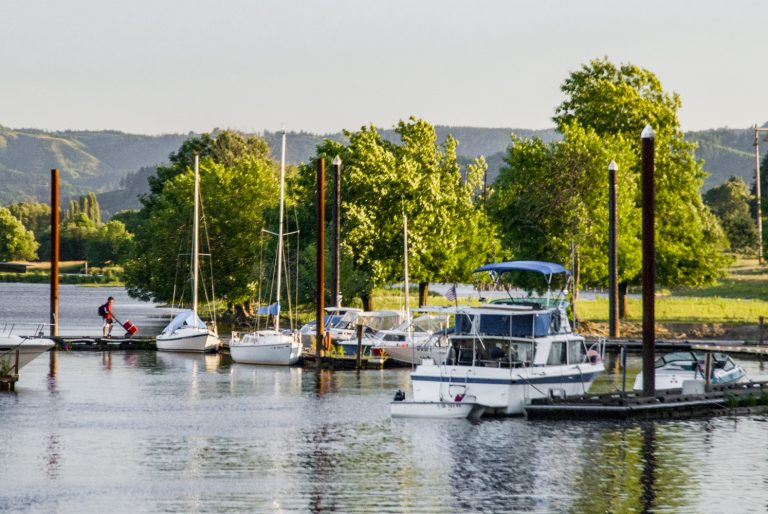
NWNL Could you define or describe “bioswales?”
POLLY BIRGE Basically, bioswales hold water in a natural setting until it either is absorbed into the ground or evaporates. They are essentially large garden plots that can survive in the summer when there’s not much rain. In the winter they almost become floating gardens, very saturated with water. Thus, they replicate a natural setting and natural processes.
There’s a great bioswale at 1954 SE Division Street that is a creative art/watershed-management tool. There by the New Seasons Food Mart, all the rainwater on that roof is captured; comes down a spout; hits this really cool art piece that twirls around; and then goes into the bioswale.
In many places, like near my house, the city has removed portions of junky sidewalk which are non-permeable and created beautiful bioswales. Besides being smart and eco-friendly, it’s a great community conversational piece. I stopped many times to talk to folks about what these are and what they do. What a cool way for that education to come through in a meaningful, personal way.
ALEXA PENGELLY With this tool, Portland has addressed how to take care of stormwater onsite versus letting it go into our wastewater removal system.
POLLY BIRGE The Portland Gerding Theater at the Armory, one of Portland’s main performance centers, is a beautifully-redesigned building with various LEED certifications and many accolades. It re-uses rainwater captured on its “eco-roof” that it then routes to its toilets. Seventy percent of the building is recycled or refurbished. The railings in the main theater are made out of recycled aluminum cans. The theater’s seats are made of recycled wool in different colors, which lends to the building’s creativity.
ALEXA PENGELLY Portland has investigated how to get away from the old infrastructure way of dealing with water so it can move into a more natural, on-the-spot approach. One of the most innovative sustainability commitments Portland has made is to revitalize its water management. The city has a whole new way of looking at management for its forests and trans-boundary natural resources. It took years to adopt this new management approach, but now it’s very comprehensive and very scientific.
We have what we call “A River Renaissance” – a culmination of city and perhaps regional consciousness about watershed outreach programs. This new interest in having clean water is getting people involved in big beach cleanups and other aspects of natural resource management on federal, state and local levels.
NWNL Do you have any specific examples of how this enthusiasm has spread?
ALEXA PENGELLY In Portland’s Johnson Creek they’re trying to restore salmon into an urban river and we think it can be done. In this specific floodplain area, they are addressing stormwater drainage and infrastructure by having educational, long-term conversations within the Johnson Creek community. The city is following up by offering to buy properties in order to restore this area back into a floodplain so the river can flood and then naturally cleanse itself.
POLLY BIRGE A Clean River Program requires management of its whole watershed – all the land that drains water into its banks. In this region, the hard decisions we face involve the unusual amount of our storm water runoff. Eighty percent of what goes into the sewers is storm water. Only 20% of sewer volume comes from day-to-day, municipally-produced wastewater. So, I think there should be a big push to educate people on capturing and managing water runoff on their property.
If we have less water going into the sewer, there’s less to deal with en route, thus saving the city money and saving each resident $80 a year, I think. It seems like many of these green projects have paid for themselves.
Homeowners’ downspouts normally spew rain and storm water out onto concrete channels and driveways and then right away into the sewer. If, instead, homeowners disconnected their downspouts, that water could be directed to water homeowners’ yards. (However, homes in Portland’s southwest hills need downspouts to avoid mudslides.)
Portland homeowners and builders are also incentivized to plant eco-roofs because they get offset money back and have lower water bills. Additionally, eco-roof systems have longer life cycles than regular roofs. Yet, they do require building a structure strong enough to sustain a heavier roof, due to the weight of soil on the roof.
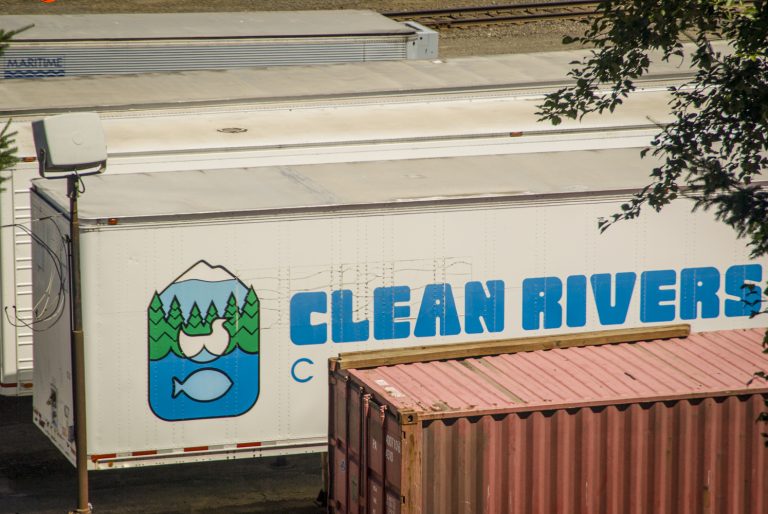
NWNL It seems the arts are a very strong arm in the educational piece of your public policy. We saw that last night in Portland’s First Thursday “Salmon for the Sandy River” Art Show.
POLLY BIRGE That’s very true. We just had a creative, capacity-strategy town hall meeting agreeing that education is the issue. It does create jobs. We believe that it is socially and economically viable to invest in art and creativity. Sponsoring regular community events here at City Hall or in community events like First Thursdays helps make City Hall, the bureaus and our information more accessible.
NWNL What was the genesis for creating the “Salmon for the Sandy River” Art Show?
ALEXA PENGELLY “Salmon for the Sandy River” was a kick-off to celebrate the removal of two dams on the Sandy River, right in Portland’s back yard about 20 miles away from here. Thanks to restoration efforts by Western Rivers Conservancy for 12 or 15 years, the Sandy will again be a free-flowing river. This First Thursday was a way to announce that and to educate people about the Sandy River Basin, its importance to Portland, and the value of open spaces being purchased around the Sandy.
Art really brings people in, captures their imagination and gets them engaged in something scientific or a policy towards creating green space. Last night’s exhibit had dynamic salmon sculptures – some up to 5’ long. They will now be placed around Portland with explanatory flyers to explain the endangered status of salmon and their river habitats.
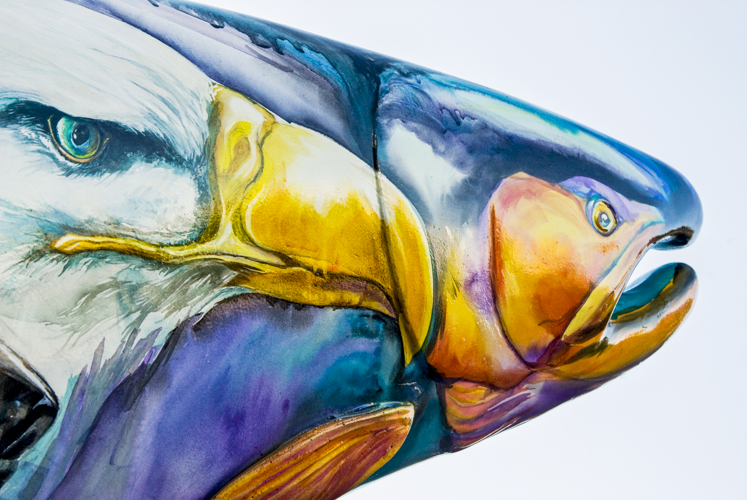
NWNL It seems that all the watershed elements I’ve encountered and issues I’ve heard addressed by scientists and politicians on our 6-week NWNL expedition along the Columbia River were encapsulated in the art displayed last night. Kudos to you both for organizing this and highlighting value of aSandy River without dams.
ALEXA PENGELLY Not everyone was aware of Sandy River, although it is only about 20 minutes from here. But many Portlanders now know that it is swimmable; it has a beach that people visit and use; and it’s a popular recreation river for hiking and picnicking family style.
Taking dams out or not taking dams out is such a political issue in the region. So it’s important to let people know what the benefits are to not having this dam. This art show engaged a wider audience than normal. While people in the science and policy discussions understand the benefits, it can be complex if you’re not involved. Art can engage people in a way that makes sense to them, because it’s very hands-on. Even tribal members not involved in the scientific discussions came last night and saw themselves represented on an issue that they really care about.
NWNL Alexa, was the Sandy River’s Marmot Dam decommissioning done because the dam had become inefficient and therefore it was cheaper to take it down? Or did it have to do with compliance with EPA and Endangered Species Act requirements?
ALEXA PENGELLY I don’t know. It was a long process. It seems there were various reasons that PGE [Portland General Electric] decided to take it out. They faced several pressures and financial decisions. Various policy issues included an expensive option of building and operating fish passage.
NWNL Do people see the decommissioning of the 70-foot-high Marmot Dam as a genesis, or a ground swell, for future dam removals? Or do they see it as an isolated action that will open up more conservation area?
ALEXA PENGELLY I think it depends on who you talk to. People who really want the dams to come out, think this is a start. But not everyone understands the issues yet. It’s very complex. There’s so much literature out there explaining the benefits of dams, that it’s easy to think, “Oh, great, Bonneville’s taking care of the dams.” The problem is that unless you’re completely engaged, you don’t really consider the dams being taken out as an option.
POLLY BIRGE I wonder if people are less tenuous about taking out the dams as we push towards alternative energy sources, such as wind power. If we have a more efficient, safer, economically viable way of having energy through wind power or other resources then ….
ALEXA PENGELLY The only problem with wind power is that it kind of depends on….
POLLY BIRGE …the wind?
ALEXA PENGELLY The issue with wind is it’s so unpredictable that they need the hydro system to back it. To have wind power that works, you need an on-demand source you can always bring in; and so hydro works perfectly with wind. Thus, the energy choice is to use either that combination, coal-fired plants or other plants.
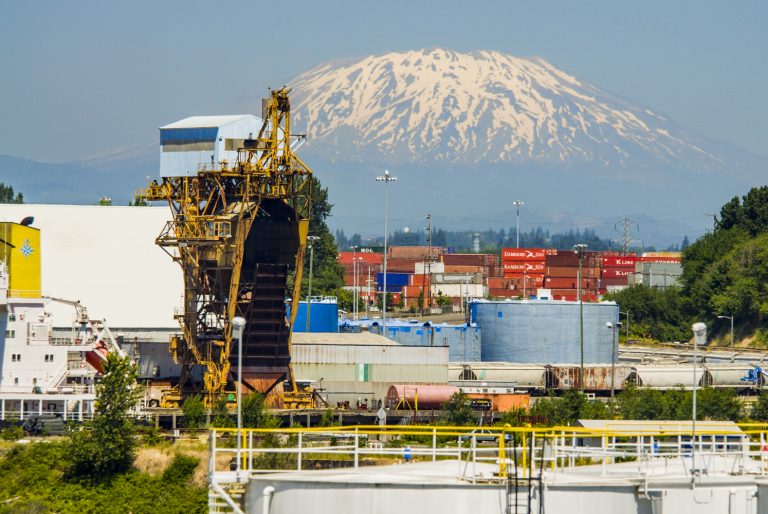
NWNL Polly, how do you evaluate Portland’s future pollution of the Columbia River in the future?
POLLY BIRGE Within the political realm, I personally think that the Commissioners and many elected officials understand the deal. They get what “green” means in a sustainable and substantive way.
NWNL What causes this new green Aha! at a grass roots level in Portland – and everywhere?
POLLY BIRGE I think it’s a combination of hope and despair. Sometimes people have to realize that animals and plants we’ve known our entire lives are now becoming extinct. This is happening because of what we’re doing and has been documented in very specific, scientifically-proven ways.
ALEXA PENGELLY I would say that our long-term Forest Project is one of the best things Portland is doing to revitalize how we manage water and endangered species. To protect much of our Mount Hood Wilderness Area, we are studying how to manage forests as a natural, trans-boundary resource, while also taking watersheds into account and managing diverse stands.
We are faced with hard decision-making, policy-making and on-the-ground thinking as we go about implementing change in small little towns, changing actual practices, and managing endangered species! They’re all so connected to the forest.
Forest protection is going to really help the Columbia River in this region because it involves so aspects of stewardship. There’s a regional consciousness about water, watersheds, outreach programs and getting involved. We originally set up our cities and our governments around arbitrary lines. Now we’re starting to wake up in terms of natural resource management and rethink answers to those arbitrary lines.
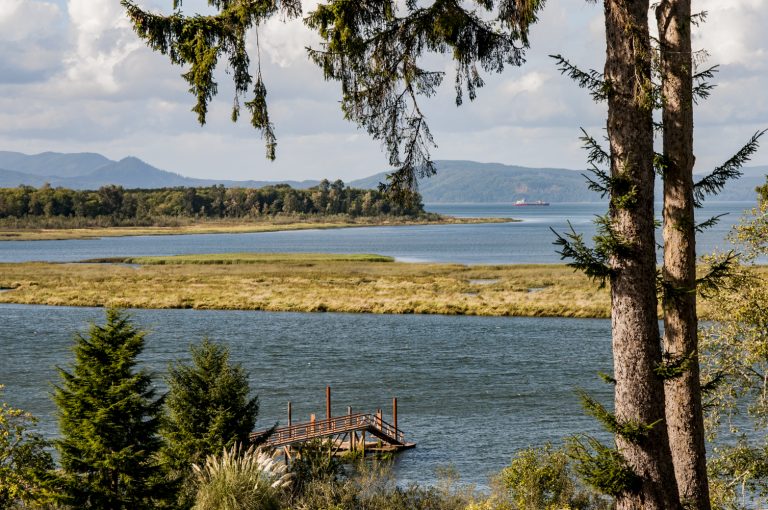
ALEXA PENGELLY Just consider that a salmon has to swim through five jurisdictions with different management ideas. It has to go from the ocean that NOAA stewards, to rivers that US Fish and Wildlife stewards. So, you have these different federal, state and local turfdoms. But locally, we’ve seen huge pushes for broader watershed management. So, while Portland and Sam Adam’s office has a large vision, broader coordination is a very slow process. It gets very bureaucratic when you work across so many different lines.
Portland depends on its Watershed Councils. Each Portland sub-watershed has some type of council that deals with its creeks, but they all have this one connected flow of water in common. I think in the future there will be even more power in our Watershed Councils.
And as we see more concern over water, global warming and pollution, we realize we need drinking water and we need water for fish. But we need also need storage for water because climate change makes precipitation less predictable. I think there’s just going to be more coordinated organization around dealing with all those types of issues.
NWNL Polly, what are Portland’s difficult-to-make priorities that will take some kind of sacrifice and that may be hard to sell to your constituents? Maybe the cost of your big pipes project that can better carry off storm water, or changing impermeable surfaces to become permeable? These city projects cost money. Do you have city and taxpayers’ support?
POLLY BIRGE I think so. It’s hard to talk about new taxes, but what’s lovely is that many of our projects have paid for themselves. If we have less water going into the sewer, we’re going to have less problems to deal with. That will save us money and be an incentive for people’s support.
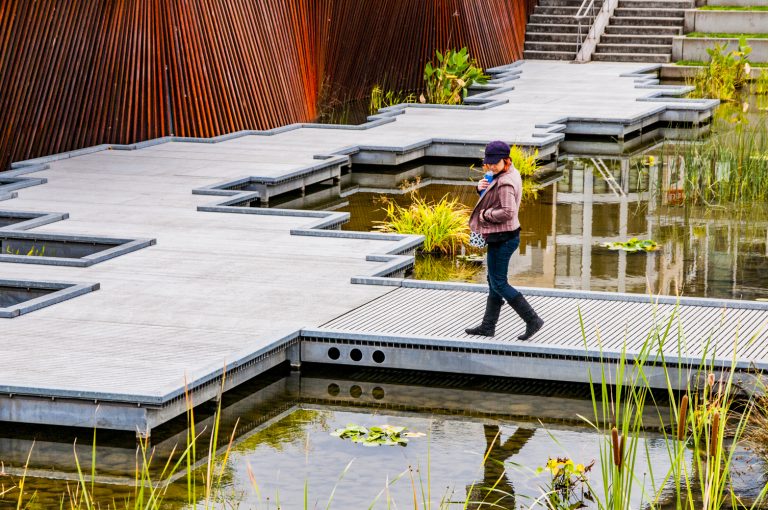
NWNL Do you coordinate with other cities, comparing notes, solutions, alternatives and approaches?
POLLY BIRGE We’ve had quite a few trips to Seattle talking about what they’re doing, since we have very similar climates, even though they have way more concrete than we do. Many cities have created Sustainable Development Offices, but our investment in our Office of Sustainable Development puts us among the most articulate and most active so far. In regard to other cities, we’re on the cutting edge.
NWNL Thank you both for explaining the positive routes cities can take to reduce urban runoff, keep rivers clean and protect their forests, our rivers’ headwaters.
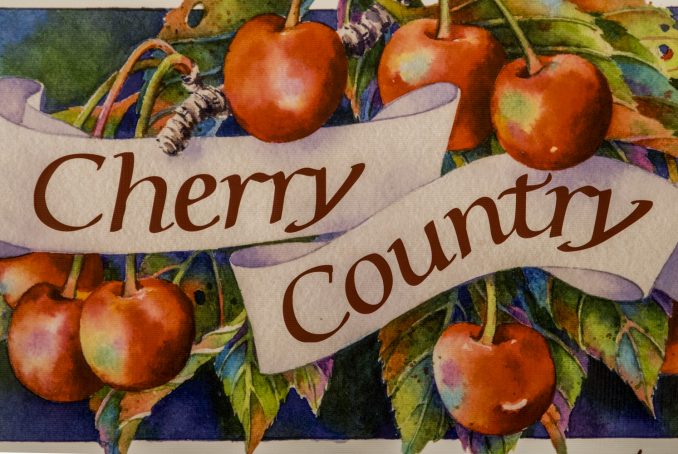
Posted by NWNL on November 12, 2019.
Transcription edited and condensed for clarity by Alison M. Jones.
All images © Alison M. Jones, unless otherwise noted. All rights reserved.
